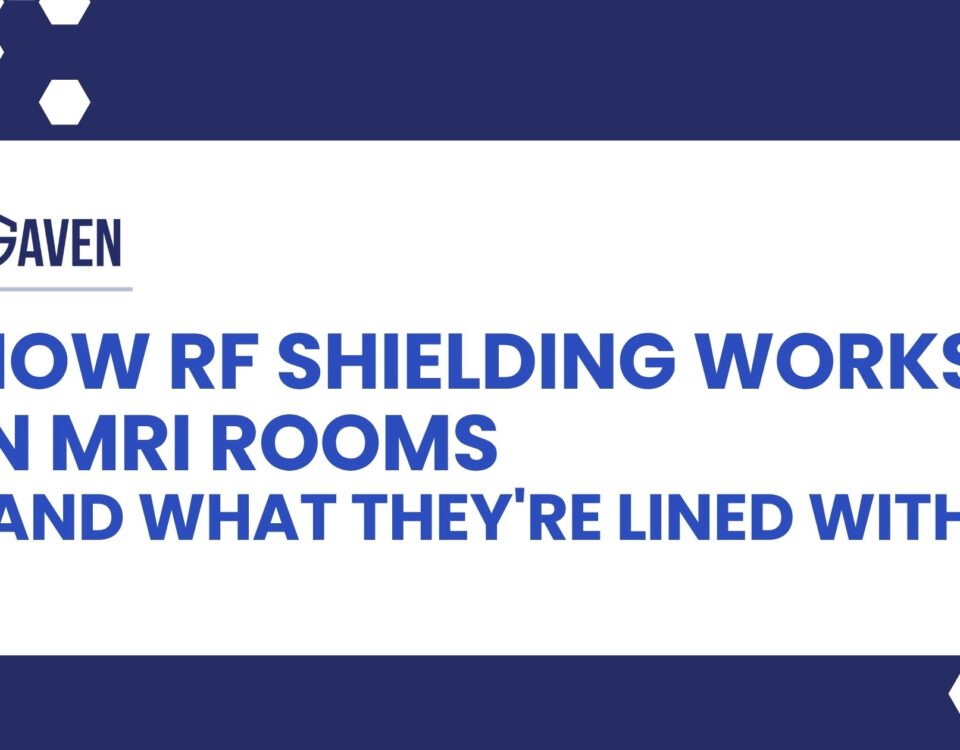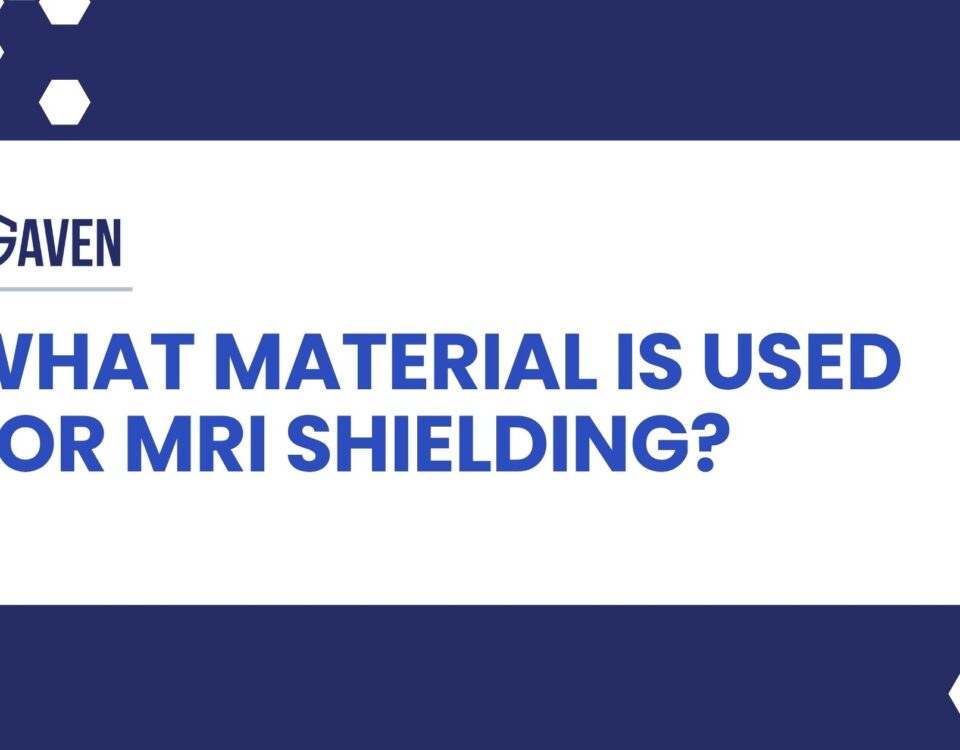


What Is Passive Shielding in MRI?
July 8, 2025


How Are MRI Rooms Shielded?
July 8, 2025Understanding how MRI systems interact with their environment is crucial for designing safe and high-performing imaging suites. One of the most common questions we hear from architects, clinical planners, and equipment managers is: what is the difference between active shielding and passive shielding in MRI?
The short answer: both serve the same purpose—controlling magnetic field spread—but they do it in fundamentally different ways. Choosing the right mix depends on magnet strength, room constraints, budget, and regulatory needs.
At Gaven Industries, we treat shielding as an engineered system, not a commodity. We integrate active and passive elements into a seamless architecture—ensuring spatial containment, life safety, and shielding effectiveness across both magnetic and RF environments.
For a broader understanding of MRI shielding systems, visit our MRI Shielding page. For a focused technical overview, see Active and passive shielding in MRI.
What is the difference between active and passive shielding in MRI?
MRI magnets generate powerful static fields that can extend beyond the scanner room. To keep these fringe fields contained—and compliant with safety thresholds like the 5 Gauss line—shielding strategies are required.
Active shielding MRI systems include specially engineered electromagnetic coils that produce an opposing magnetic field. These secondary coils are integrated by the MRI manufacturer and reduce the external footprint of the magnet’s field.
Passive shielding MRI systems, by contrast, use physical materials like silicon steel or mu-metal installed around the MRI suite. These materials absorb or redirect stray magnetic flux, preventing it from reaching adjacent rooms or equipment.
| Factor | Active Shielding | Passive Shielding |
| Mechanism | Magnetic field cancellation via internal coils | Magnetic field absorption/redirection via room materials |
| Location | Built into the MRI magnet at the factory | Installed on-site into walls, floors, or ceilings |
| Flexibility | Fixed at time of manufacture | Customizable to room layout and constraints |
| Structural Load | Minimal | Adds weight and may require reinforcement |
| Cost | Included in MRI price | Separate cost depending on scope and material |
Active and passive shielding in MRI are not mutually exclusive. In fact, most MRI installations—especially those with tight architectural footprints or adjacency to critical systems—rely on both. Active shielding minimizes the base fringe field, while passive shielding further refines containment based on real-world layout and building conditions.
“Shielding strategy is rarely either/or. It’s about layering the right solution at the right stage—factory, floorplate, or both.” — John J. Gaviglia, Founder, Gaven Industries

Magnetic shielding examples
To see the difference in action, consider these magnetic shielding examples:
- Passive shielding: A hospital installs steel plates in the walls and subfloor of an MRI suite located next to an OR. This ensures that the fringe field doesn’t interfere with surgical equipment or patient monitors, while satisfying ANSI compliance within a compressed footprint.
- Active shielding: The OEM supplies a 3T MRI with internal counter-coils that reduce the 5 Gauss line radius from 16 feet to under 10, minimizing how far the fringe field extends into adjacent rooms—reducing the need for structural reinforcement or adjacent shielding.
The decision to use one or both types is typically influenced by:
- Room location: Facilities in multi-story or urban buildings often use passive shielding to account for nearby elevators, labs, or mechanical systems.
- Magnet strength: Higher field magnets (e.g., 3T and above) generally require more aggressive containment strategies.
- Installation constraints: Retrofits may lean heavily on passive shielding to work within existing construction, while new builds can optimize for magnet-based containment.
At Gaven, we use 3D modeling and OEM-provided fringe field maps to simulate spatial spread, define Gauss-line encroachments, and calculate attenuation needs before a single panel is fabricated—ensuring shielding strategies are evidence-based, not estimated.
What is the difference between RF and EF radiation?
In shielding discussions, RF (radiofrequency) and EF (electric field) radiation are often mentioned—but they’re not interchangeable.
- RF radiation: Consists of high-frequency electromagnetic waves used in MRI signal transmission. Shielding against RF interference involves creating a Faraday cage using conductive materials like copper or galvanized steel—critical to image clarity.
- EF radiation: Involves electric fields generated by voltage potential. EF shielding generally uses dielectric barriers or conductive coatings—but is not a primary concern in MRI environments.
MRI rooms are designed primarily to mitigate RF interference and static magnetic fields. While EF concerns may arise in high-voltage imaging or lab environments, they are secondary in standard MRI suite design.
What is the difference between EMI shielding and RF shielding?
EMI shielding (electromagnetic interference shielding) is a broad category that includes all efforts to block or reduce unwanted electromagnetic energy. This can include static fields, RF signals, transient voltages, and even digital noise.
RF shielding, on the other hand, is a subset of EMI shielding that specifically targets radiofrequency waves—critical in MRI systems where even small amounts of RF noise can corrupt scan data.
All MRI suites require RF shielding to prevent:
- Ambient interference from telemetry systems, elevators, or cellular towers
- Crosstalk between devices operating within the same facility
- Imaging artifacts or failed scans due to signal contamination
At Gaven, we design and install Faraday cage systems using soldered copper panel assemblies or galvanized steel depending on performance spec, budget, and environmental exposure. Each system is tested to IEEE-299 and MIL-STD-285, and validated through on-site attenuation testing before equipment activation.
Choose the right shielding strategy for your MRI room
The right shielding approach isn’t a choice between active or passive—it’s a question of how to best combine them. Each method plays a critical role in supporting MRI suite safety, performance, and compliance.
At Gaven Industries, we design integrated shielding systems that combine OEM-calibrated active shielding with site-specific passive barriers, tested and validated to match both code requirements and spatial limitations. Our engineering-led process ensures nothing is left to chance—shielding is mapped, modeled, and confirmed before magnet arrival.
Whether you’re working with a retrofit, a tight footprint, or a high-field magnet, our team will help you model the risk, engineer the solution, and deliver shielding that performs exactly as intended.Choosing between active and passive shielding solutions? Gaven Industries is here to help. Explore our MRI Shielding expertise and learn how active and passive shielding in MRI can be integrated to suit your facility’s needs.




